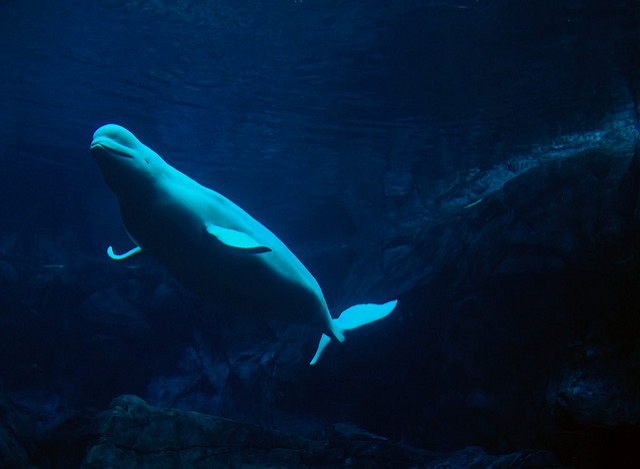
Beluga whales swim great distances to reach their breeding grounds (Image by Tim CC BY-NC-ND 2.0)
Every year in the summer, belugas swim to a predetermined spot to moult, feed and mate. But the melting and subsequent shifts in sea-ice could get in the way of the whales’ vital trek. A new study analyzes data from a 20-year span to study how shifting ice patterns influence beluga migration. Researchers found that low concentration of ice in the Spring often leads to higher risk of predation on belugas by killer whales, and thus alters the belugas’ swimming course for survival. These findings suggest that further reduction of sea-ice could put the beluga population at risk, as well as disrupt the ecosystem with all the other marine life that relies on beluga migration for survival.
Authors:
Greg O’Corry-Crowe, Andrew R. Mahoney, Robert Suydam, Lori Quakenbush, Alex Whiting, Lloyd Lowry, Lois Harwood
Corresponding author:
Dr. Gregory O’Corry-Crowe, Harbor Branch Oceanographic Institute
Canadian contributor:
Lois Harwood, Biologist, Department of Fisheries and Oceans, Yellowknife, NT, Canada, X1A 1E2
Original paper published in Biology Letters on November 15, 2016.

